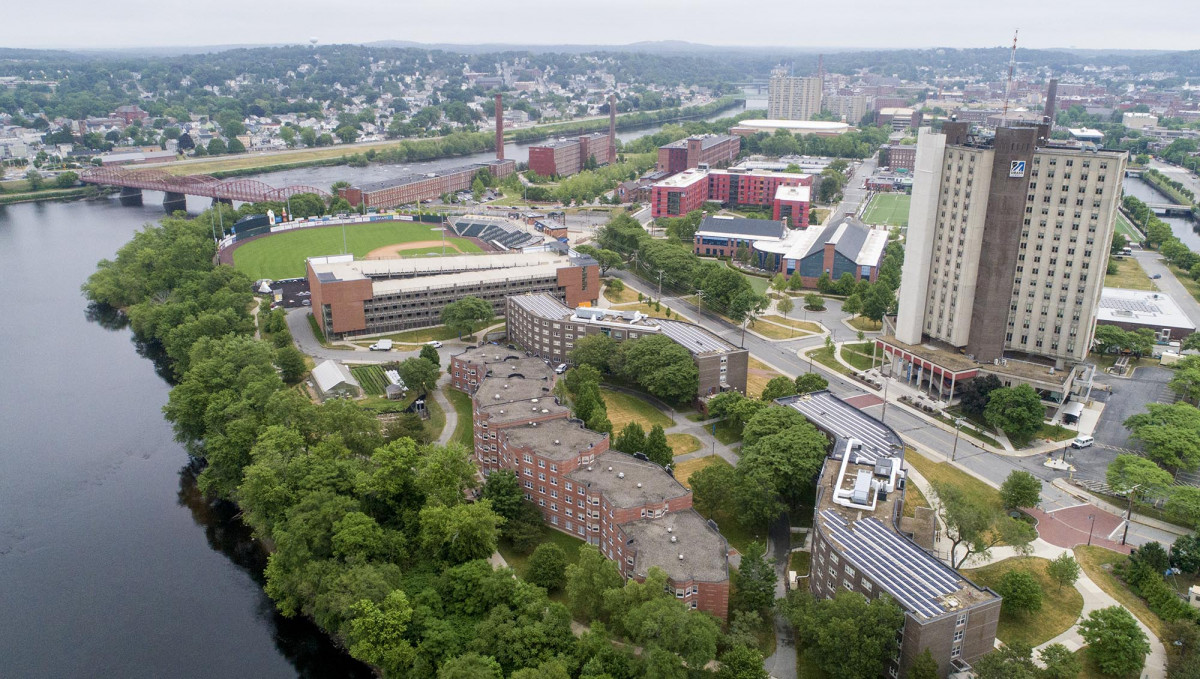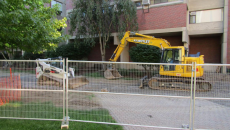(Photo courtesy of UMass Lowell) Until the 1970s the North Campus and South Campus were part of entirely separate schools, founded for very different purposes. They merged to form what was then known as the University of Lowell.
Gigi Torres
Connector Contributor
Universities typically keep their campuses close, with all buildings and classes within the same area. The design of UMass Lowell is different than the usual arrangement because the university separates its multiple campuses, with the primary two being North and South. Students, faculty and administrators have found ways around the distances between the campuses, but that does not mean they are satisfied.
Most students would prefer that North and South campus were closer. “I would want them to be close, not necessarily all together in one though,” Victor Monegro, a North campus major, said. “If it was like a 5-minute ride versus [the current] 15-minute ride, that would be better.”
Transfer student Jakieh Blevins has experienced a university with one campus and says it makes it easier for everybody. “It helps students get to class and it’s more efficient for teachers as well if everything is all in one area.”
Andrea Albano, another North campus major, would agree and claim it would be easier for students to travel between classes.
Executive Director of Planning, Design and Construction at UML Adam Baacke says that the distance between the two campuses is a part of the history of the school. He states that our North and South campuses were each previously three different universities throughout the years: South was most recently Lowell State College while North was most recently Lowell Tech.
“They were completely independent of one another, they were two entirely separate schools founded for very different purposes, fairly complementary,” Baacke says. “Until the 1970s when the two were merged to form what was then known as the University of Lowell. At that point, we became one university with two campuses.”
He also says that the distance is not only something that the students notice but the faculty as well. Baacke says he thinks the faculty complain more than the students about and traveling between the two primary campuses.
“When faculty are asked to teach back to back courses on the two campuses, they generally don’t want to do that,” he said. “It’s simply because they don’t feel that the transportation is reliable enough.”
There is approximately one mile between the two campuses. Students view this distance as having both positive and negative effects. “The positive, I would say, is that it gives a different feel to both campuses,” Monegro says. “The majors are separated, so there are different [types of] people on both.”
Albano would see this point as a negative. “You don’t get to socialize or meet new people as much due to the differentiation between North and South.”
Blevins says traffic interferes with creating an optimal or desired class schedule. “Traffic is annoying,” he says. “When it comes to making a schedule, you can’t have all your classes on separate campuses because you won’t make it there in time.”
Baacke says he is aware of this issue and the university is trying to build an identity of one UMass Lowell. “The traffic conditions and other circumstances between the campuses make it very difficult to expect a lot of travel back and forth from one campus to the other,” he says. “That’s been the major driver to why the university essentially places three colleges on each campus and keeps them somewhat separate is to actually reduce the amount of daily trips between the campuses.”
When travel between the two campuses is needed, most students choose to take the shuttles provided because it is the fastest option, but students do devote a lot of time to travel.
“There is always something happening with the shuttles,” Albano says. “Whether they’re switching drivers, or there’s traffic. I would say it takes me about 45 minutes to travel.”
Monegro says it takes him a similar amount of time to travel from North to South. “My classes on North and South are one hour apart, so it takes me about 30 minutes.”
Baacke also notices how long it takes and he says he is also careful about time when considering his travels.
“So if I have a meeting scheduled, I need to be very thoughtful about scheduling a little bit of travel time,” he said. “If I’m on North campus and I need to get to South campus for the next meeting, I can’t have them be back to back because I won’t get there on time.”




